The Electronic Intifada 28 January 2016

“Nobody organizes us. We do not want to depend on anyone or have money involved. It’s better to be independent.” East of al-Bureij refugee camp, Gaza Strip
For nearly four months, popular protests, violence and general unrest have buffeted the occupied West Bank and Gaza Strip, leading some commentators to suggest a third intifada or uprising.
Most of this is driven by restive and young people tired of endless and evidently pointless negotiations between the Palestinian Authority and Israel that have brought no end to Israel’s military occupation and only seen its illegal settlements expand.
“This is our land. We must do anything to free it from occupation,” says Mahmoud, 26, from al-Azzeh refugee camp in the West Bank city of Bethlehem.
Mahmoud (not his real name, since Israel frequently arrests protesters) has been a regular participant in demonstrations against the military occupation, in which youth confront Israeli forces with stones and, less frequently, Molotov cocktails. The army tries to suppress these protests with tear gas, rubber-coated steel bullets and live ammunition.
Since the beginning of last October, which witnessed increased confrontation with the occupation, more than 160 Palestinians and approximately two dozen Israelis have been killed. A United Nations monitoring group recorded a weekly average of 1,000 Palestinian injuries at the hands of the Israeli army during the last quarter of 2015.
Approximately one-third of those Palestinians killed, and many of those injured, were hit by live ammunition while taking part in demonstrations or while they were in the vicinity of protests.
Risks
The youths confronting the Israeli army know all too well the risks involved.
“I have mixed feelings during clashes. Sometimes you are afraid of dying,” Mahmoud explained. “But it’s also good to get the anger out. I have two children. I am married. In the night, I start to think about them, what they will do if I do not come back. But during the clashes, I try not think about it.”
The protests are led by youth and not any particular political party.
Khaled (also a pseudonym), a 21-year-old student from the Ramallah area, said the Palestinian Authority’s only role has been to try to stop them.
“Their role is to bring down the spirit of the people. It does not support us,” he said.
Palpable frustration
Their frustration is palpable and has sparked a debate among analysts and journalists whether this could be termed a third intifada. But the youths themselves seem not to care much about designation.
“First intifada, second intifada, it doesn’t matter. The intifada is connected to the occupation,” said Mahmoud, “and so it will continue. It is an ongoing process.”
The following series of photographs were taken at protests in the West Bank and Gaza Strip in the past four months. The quotations included are from the two Palestinian youths interviewed, neither of whom are featured in the photos.
Images by Activestills photographers Anne Paq in Bethlehem, Ezz Al-Zanoon in the Gaza Strip, Mohannad Darabee in the Ramallah area, Oren Ziv in Bethlehem and the Ramallah area. Photo editing by Shiraz Grinbaum.
Activestills is an independent collective based in Israel/Palestine which uses photography as a tool for social and political change.
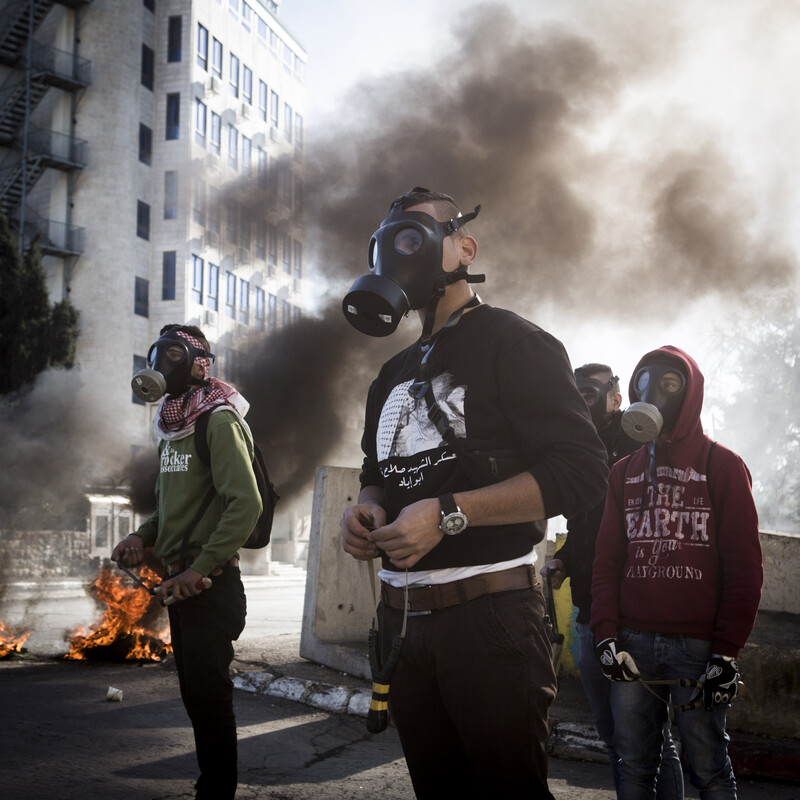
“We are here to prove to the occupier that we will not accept them. We won’t live in peace with the occupier and we will keep resisting until they leave.” Bethlehem
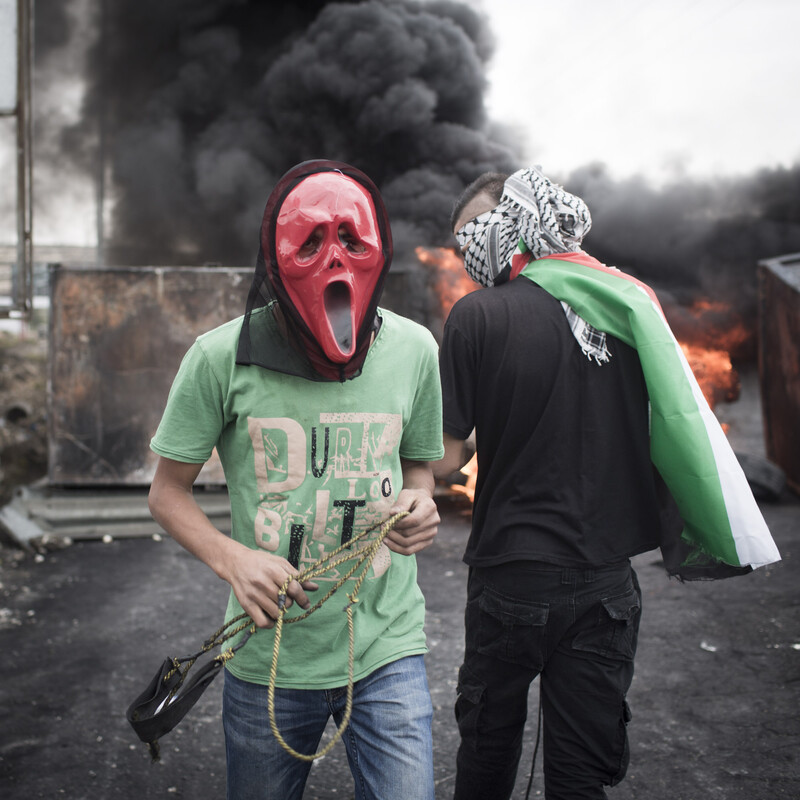
“Whoever comes here knows they will be either be arrested, or martyred or injured. But in the end, I don’t think anyone is afraid.” North of Ramallah, near the Beit El settlement
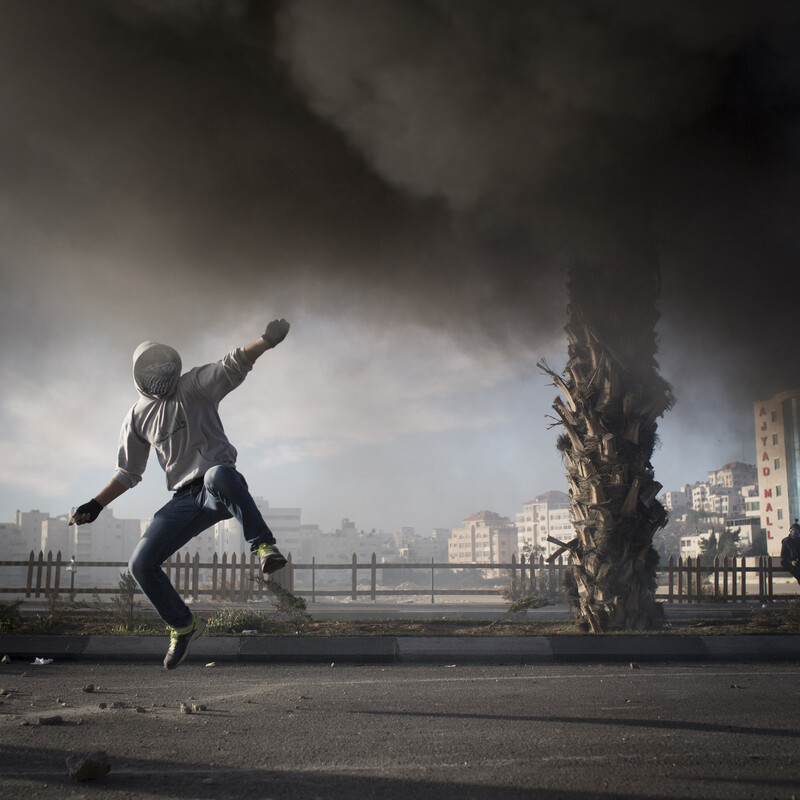
“Any rational person understands that stone throwing will not damage a military jeep or kill a soldier. However, we use stones to show they are the enemy.” North of Ramallah, near the Beit El settlement
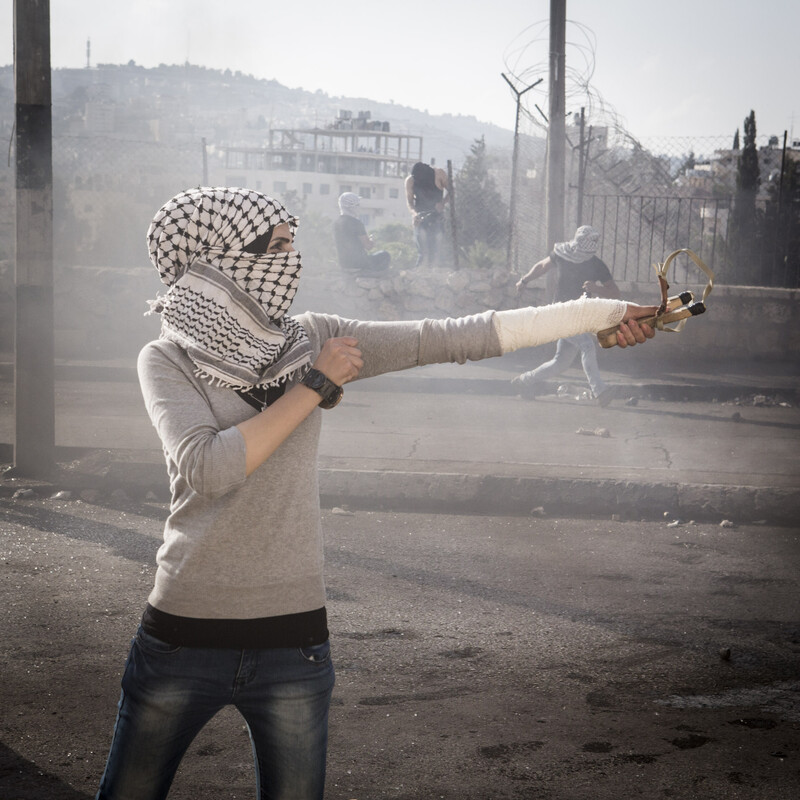
Bethlehem
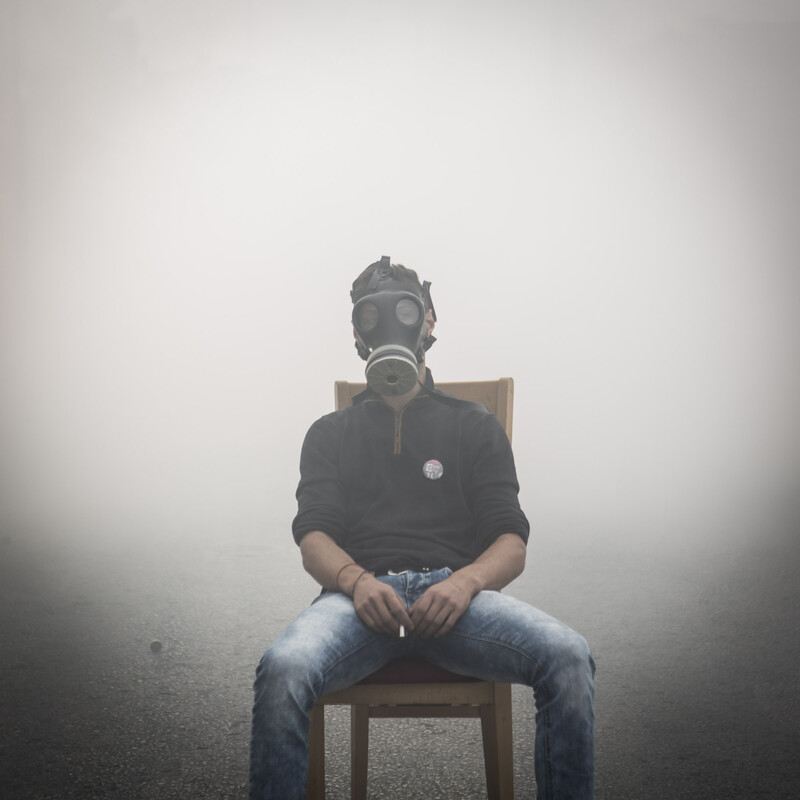
“They fire a lot of tear gas into the [Al Azzeh refugee] camp.They want families there to stop us. But the families understand that; they support us and take care of us.” Bethlehem
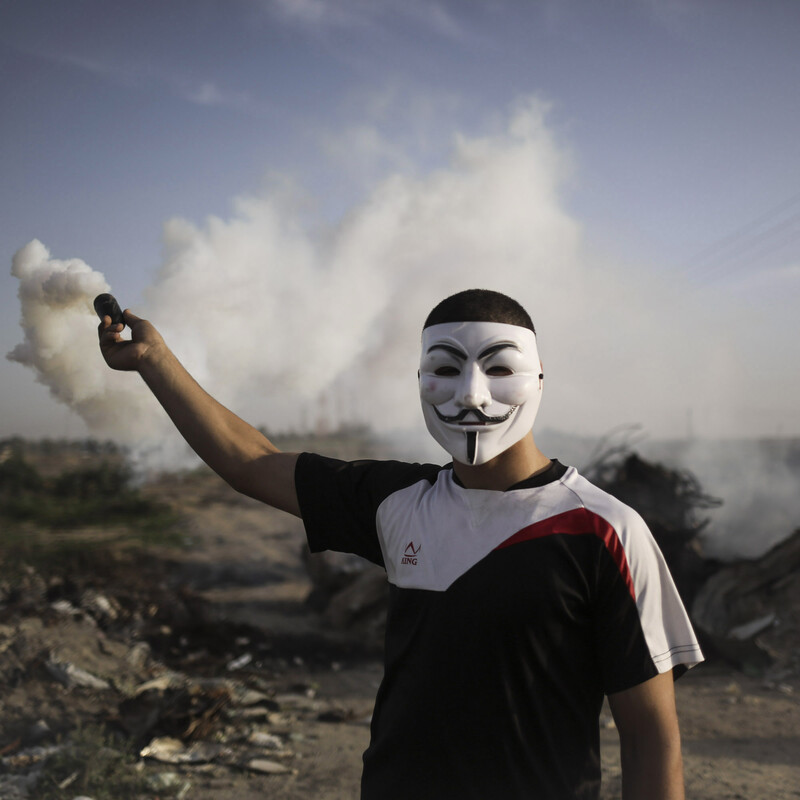
Gaza Strip, east of al-Bureij refugee camp
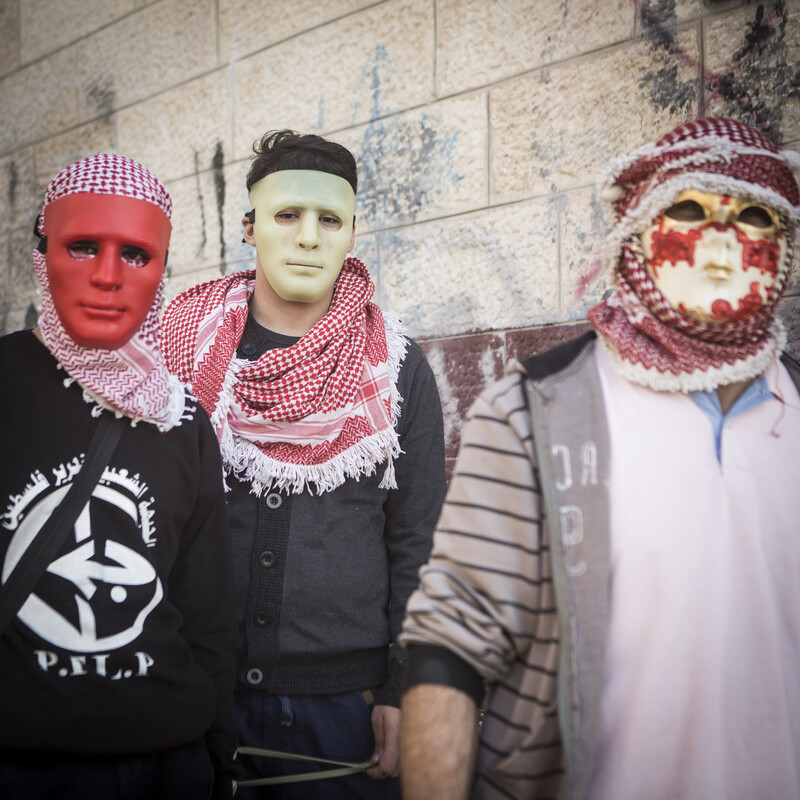
“We cover our faces because the occupying authority might [otherwise] arrest us. We also fear our own [Palestinian] authority would arrest us in the same way.” Bethlehem
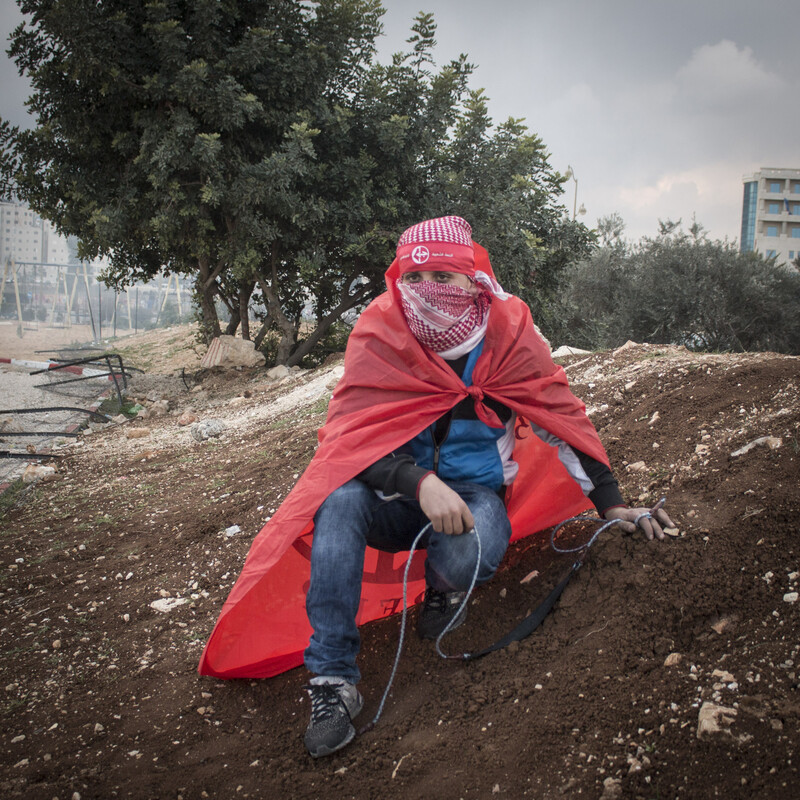
“The [peace] agreements didn’t work. The older generations should have changed them. Our role, you can say, is to refuse these agreements. We are against them, because they do no good to us and our land.” North of Ramallah, near the Beit El settlement

North of Ramallah, near Beit El settlement

Bethlehem

“There is a lot of pressure now. We look at the videos of the women in al-Aqsa who cannot enter. The occupation wants al-Aqsa. Why can Jews enter and I cannot? It’s only 10 kilometers from here, and I have not been able to go to Jerusalem since 2008.” Bethlehem

“In the night, at around 1am, the Israeli army comes and arrests men. They also threaten families that their homes will be demolished if their sons will continue to go to throw stones.” Bethlehem

“The [PA’s] Presidential Guard stood in our way. We had an altercation with them. They were kind of embarrassed. Then they told us their work there was only for an hour and a half and then they would allow us in. We refused and kept going.” Bethlehem

Gaza Strip, east of al-Bureij refugee camp
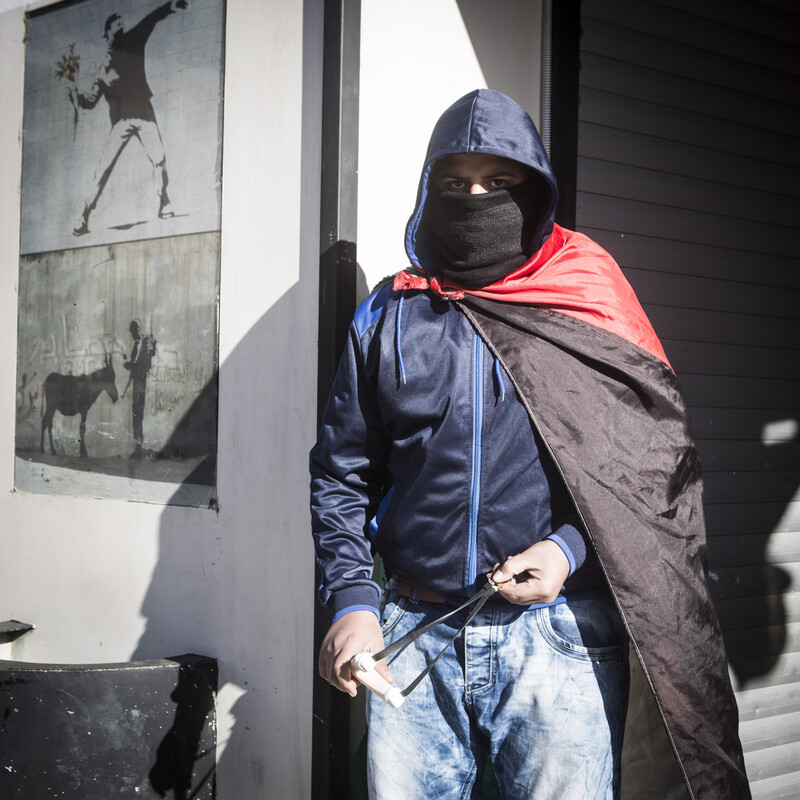
“This land is for everyone, not just the men. Of course the women can participate in the clashes.” Bethlehem
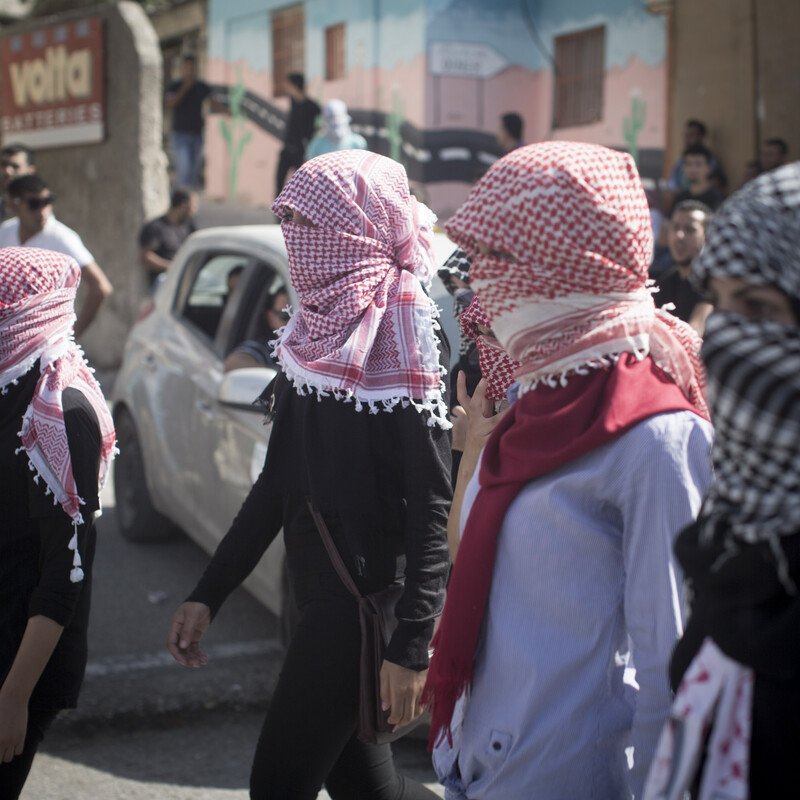
Bethlehem

“The Palestinian Authority exists by agreement with Israel. The Palestinian Authority only exists to make Israelis feel safe. They work hand-in-hand with the Israeli military. In the West Bank, nobody loves them.” Bethlehem

Gaza Strip, east of al-Bureij refugee camp

“Sometimes, our families try to talk to us and make us stay home. But every home has someone who has been arrested or killed. So you are also ashamed if you prevent your son from going to the clashes. My mother asked me to come back after one hour, just so she can see I am alright.” Bethlehem

A Palestinian youth in Bethlehem wearing a t-shirt with the hashtag “Bahamish” written on it. “Some shout ‘Bahamish’ to the soldiers. It means ‘it’s ok’ or ‘nevermind.’ But if they kill us, this is not ‘bahamish;’ it’s important.”

“The resistance started 100 years ago. I hope we will get our freedom and return to our villages. There is a future for Palestine. But there is no future with occupation.” Bethlehem


